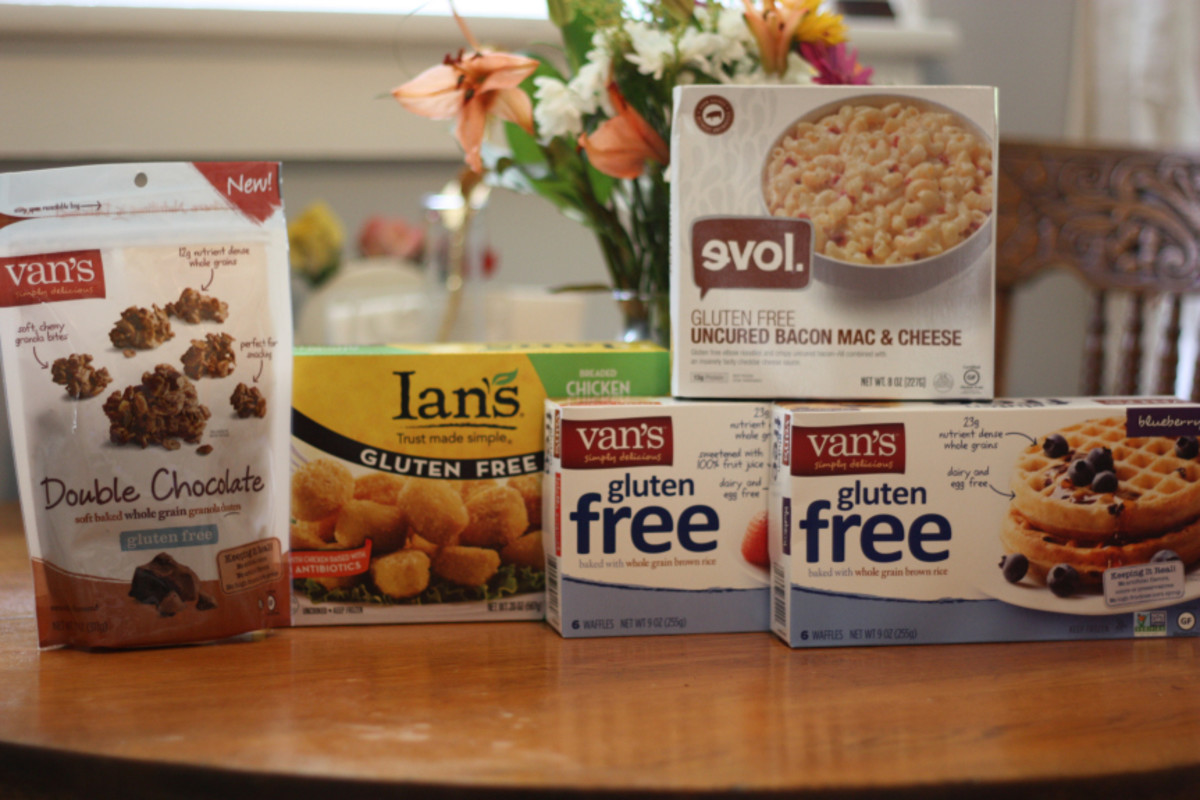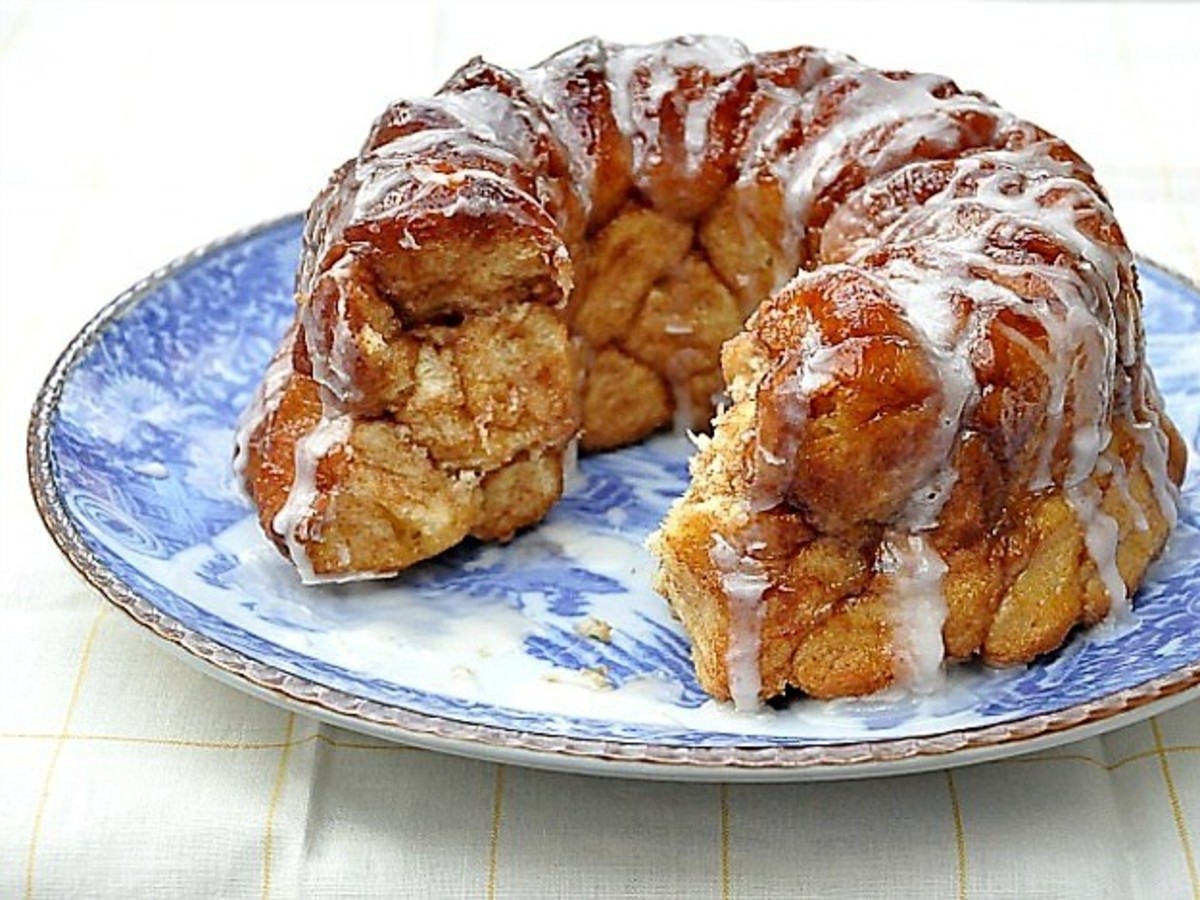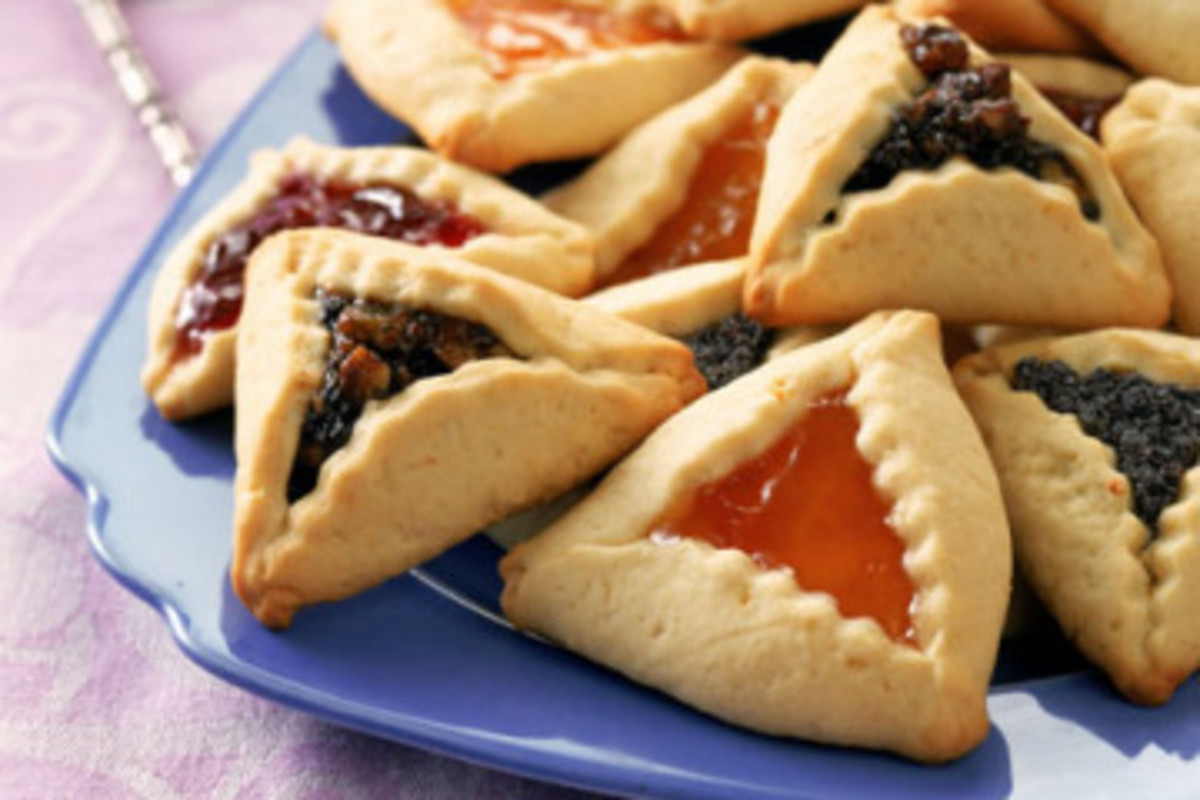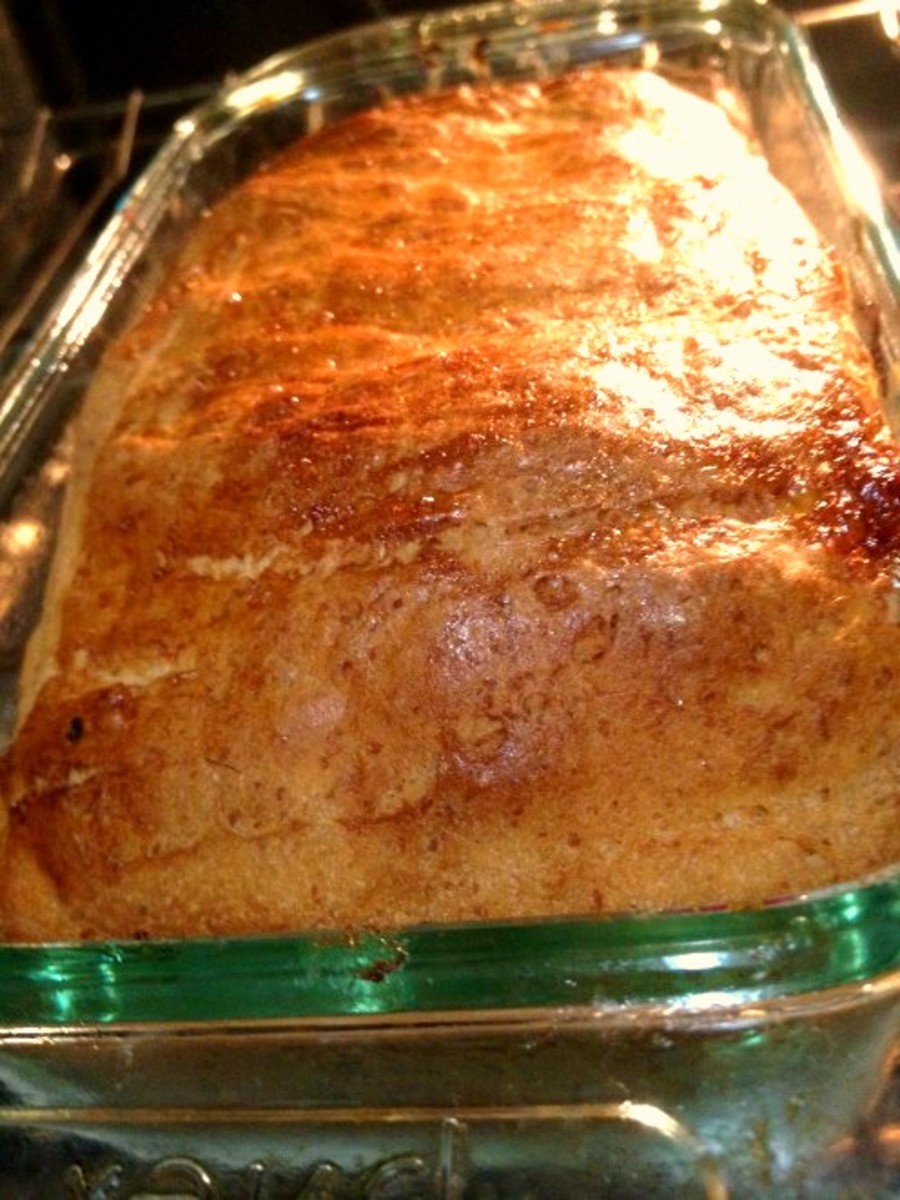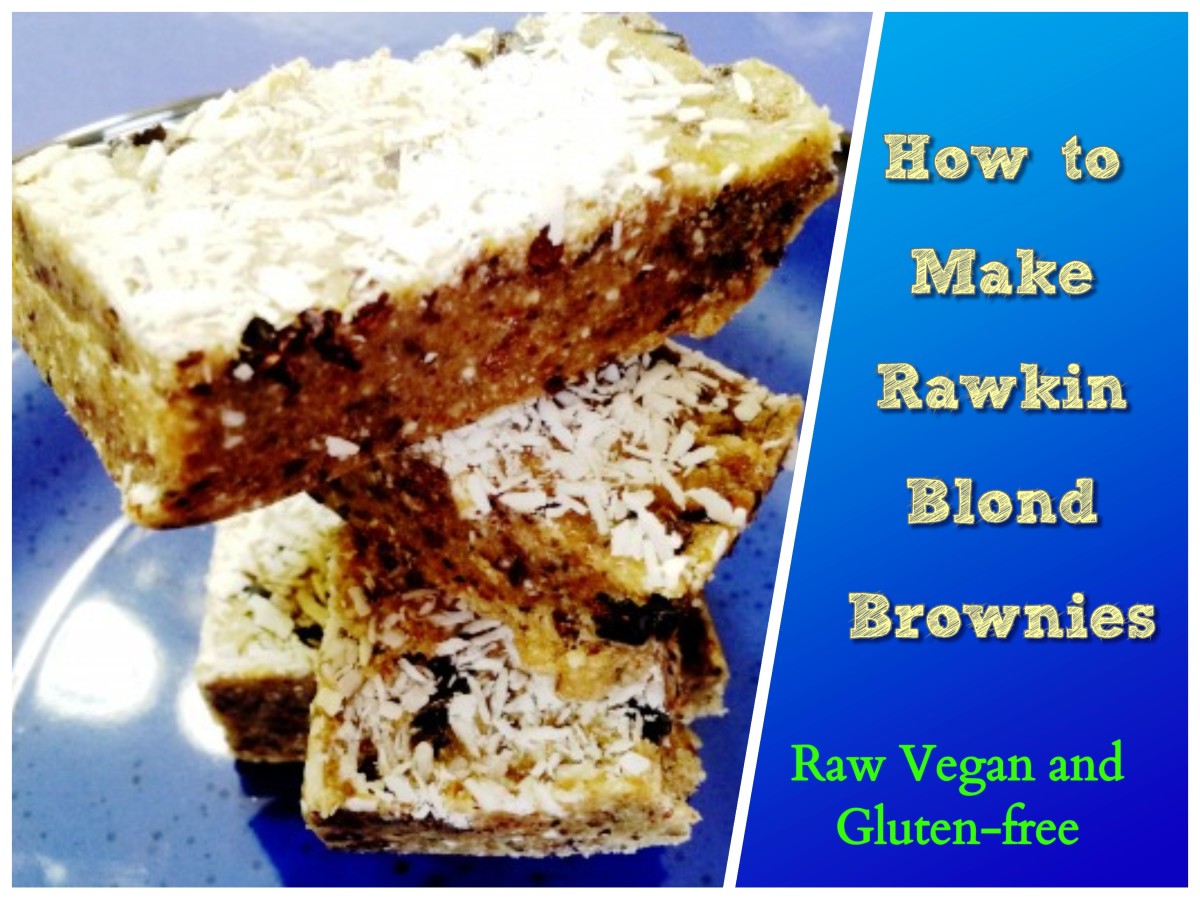- HubPages»
- Food and Cooking»
- Dietary Restrictions»
- Dietary Restrictions for Health
Tips for Baking Gluten Free

When you are first diagnosed with Celiac Disease or gluten intolerance, the life style change seems mind boggling. But the most depressing part of eating gluten free is the sweets. (Which is why there are so many commercial varieties of cookies available, and not so many gluten free breadcrumb options) Gluten is what gives cookies and pies their springy texture. It is the glue in the dough that lets bread rise without falling apart.
Gluten, in terms of taste, is good. But for people with Celiac Disease or Gluten Intolerance, gluten is very, very bad. It causes a range of gastrointestinal problems, predisposes them to osteoporosis and malnutrition and in essence, must be avoided at all costs. Mostly at cost to one's taste buds.
Thankfully, the prevalence of gluten intolerance has led to a diverse offering of gluten free flours. There are commercial cookies, breads, muffins and other baked goods available. But none come close to being home made. And while some people are content to peruse the wide array of gluten free cook books available in stores and learn new favorite recipes, others miss their old favorite stand bys.
Learning to cook gluten free isn't really that difficult. But there is a learning curve. The first batch of gluten free cookies you make will most likely taste nothing like the Tollhouse cookies you remember. They may even taste like rocks. Or paperweights. Or styrofoam.
Never fear. Persistence is the key. And here are a few tips I've learned from trial and error.
In my family, the gluten free diagnosis did not come alone. Alongside it were an intolerance to corn derivatives, a dairy allergy and a host of lesser intolerances that made the whole of baking, or even eating, seem nearly impossible. Adding corn to the gluten free restriction essentially rules out all gums, which help to simulate the elasticity gluten gives to baked goods. I've found that corn and gluten free items do have a different texture than 'regular' goodies. It isn't a bad texture, and my goodies disappear as quickly as their gluten counterparts and various gatherings so others agree. But it's important to acknowledge that your end product is not necessarily the 'same' as it used to be. Be prepared to settle for something that 'tastes good'. And make notes so that next time, you can experiment to get something that tastes a little better.
Rather than giving you my favorite recipes, I'm going to assume you have a few dog eared, egg spattered recipe cards of your own that you miss. The goal of this article is not to teach you how to create a new food. It's simply to help you learn to adapt your old favorites to a state of gluten free deliciosness.
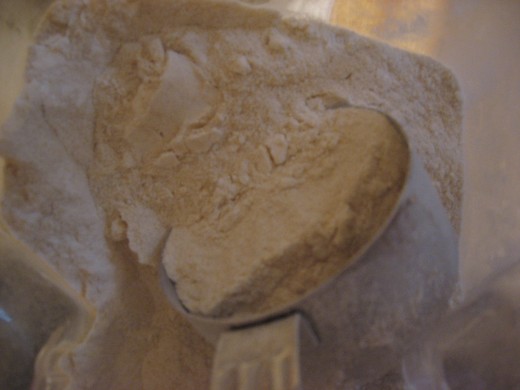
Gluten Free Flour Power
Since gluten has a unique protein content and elasticity, it's essential to use a variety of alternate flours in order to get a similar texture and comparable end product. Some gluten free flours available are: Brown Rice, Sweet rice, Potato starch, Amaranth, Millet, Quinoa, Lentil, Tapioca starch, Almond, Sorghum, and Buckwheat.
Usually, you need a starch like tapioca or potato to lighten the final product. Occasionally, just one or two flours will do the job. But in the beginning, you want quick and easy. And once you get a firm grasp on gluten free baking, you'll still want to have a basic mix to fall back on. Personally, I keep a blend of Brown and Sweet rice flours in the fridge. They are combined in a ration of 1:1. I add some tapioca starch, 1/4 cup to every cup of flour, when baking. This always yields decent results, and I rarely have to do much tweaking of the final recipe. I do not use any gums, although many people in the gluten free world can't imagine life without them. Most gluten free cookbooks will include at least one recipe for a basic flour combination recipe. Find the one that agrees most with your digestion and taste buds and stick to it.
Remember: find the all-purpose flour mixture that works for you and your family.
Gluten free flours tend to be expensive, and that makes it all the more frustrating when a recipe doesn't turn out the way you hoped it would. So when you give a recipe a try for the first time, reduce the ingredients by half or thirds (depending on how many eggs it calls for). Write the ingredients out on a sheet of paper in their halved amounts so that you don't mix it up in the middle of cooking and find yourself unable to reproduce the recipe or struggling to figure out what went wrong.
After your first trial run, you can adapt the recipe as necessary...and then you'll be ready to present it to company. Or at least tuck a finalized version into your gluten free recipe file. And that recipe file is important. When a birthday sneaks up on you and you're desperate for a slice of real cake, the last thing you want to be doing is experimenting again. So write down each trial's ingredients, and stick the final winning recipe (or closest approximation) into a file for future use. I've learned that lesson the hard way!
Remember: Start with a reduced recipe for the trial run and make notes on any and all adaptions.
Adapt the Recipe Itself
In terms of allergen filled, old-fashioned baking, most recipes start by having you cream the butter and sugar together. This creates and holds teensy tiny little air bubbles, ensuring that the final recipe comes out light, fluffy and delicious.
However, vegetable oil and margarine do not hold air bubbles nearly as well as butter does. And gluten free flours have different properties than gluten does. Gluten free cooks may find that they have more success if they use a ribboning technique instead of creaming. Start by beating your eggs and sugar together until they are thick and ribbony. It takes almost five minutes. If you don't wait that long, it's not the end of the world (or your recipe).
Another trick I've come across is to beat the eggs in the liquid first until it's all frothy, then add sugars and slowly stir in the flours and oil. For our dairy free/gluten free baking this technique seems to work pretty well, but I've not yet compared it directly to the other techniques.
Different techniques work well for different individuals and different situations. Remember: experiment with these techniques and the order of your ingredients. You may be surprised at what a difference a change in directions makes.
It's In The Pan
Gluten cakes have extra springy-ness from the gluten to hold themselves up. Gluten free cakes, on the other hand, tend to sag in the middle. Gums can help to prevent this problem. Another tactic is to use a smaller pan.
If there's something for the batter to stick to besides itself, it's less likely to fall. It won't get those dense middles that need to be hidden with extra frosting. (Your kids might like that aspect, though) Cupcakes almost always rise nice and fluffy. Loaf pans work well. If you want a larger cake, try a ring shaped pan.
There are also new, kitschy cookie pans that are perfect for gluten free baking. These cookie sheets have holiday themed molds built right in. There are hearts for Valentine's Day, Gingerbread men for Christmas, and tombstones for Halloween, to name a few. Fill the cavities with cookie dough or muffin/cake batter and bake them up. Just grease them well first. Many people complain that the holiday shaped cookie pans take up too much space in the cupboard, but those little decorated spaces keep the cookies from spreading into each other or off the sheet. They also produce cute little pre-decorated masterpieces. Or, if you don't grease them well enough, a lot of broken cookies your family is forced to eat instead of displaying.
If you want to use a traditional cookie sheet, tuck the dough into the fridge for half an hour before baking. It holds together better that way.
Remember: Choose a smaller pan for cakes, and use preshaped forms for cookies or chill the dough before baking.
Final Adjustments
There are just a few more tactics to keep in mind when cooking allergen free.
- Gluten free goodies burn quicker than their gluten counterparts, so turn down the oven. A 350* oven can be turned to 325*. Check the baked goods early and often. Although the dough itself may not approximate the gluten dough you're used to, the end product is tested in the same way. A toothpick inserted in the middle should come out clean.
- Make sure the pan itself is greased well, or use parchement paper. Gluten free goodies tend to fall apart easily, and they stick to things. You can pick up an oil mister at most housewares stores, or check your favorite baking spray for allergens. You can dust the pans with rice flour or cocoa powder as well.
- Don't forget about flavor. This is less of an issue if you're only concerned about gluten, or even gluten and dairy. But when baking gluten, dairy and corn free, I need to use a heavy hand with seasoning. Cinnamon and nutmeg add a subtle layer of flavor to many cookies, and enrich a variety of cakes. And everything's better with chocolate, or so they say. Chocolate chips, shaved chocolate, or a ribbon of melted chocolate add an extra bit of interest to many baked goods.
- If you have any baking left over, (and extras are always a good plan), you'll find that gluten free goodies tend to turn stale quicker than their counterparts. Instead of keeping them on the counter or in the fridge, wrap them up and freeze them. They defrost well, and some cakes actually taste better for the process.
Before you know it, you'll be a gluten free, allergen free baking pro. Your kids will thank you. And so will your taste buds. You don't have to give up baking when you give up gluten...you just need to experiment a little.


